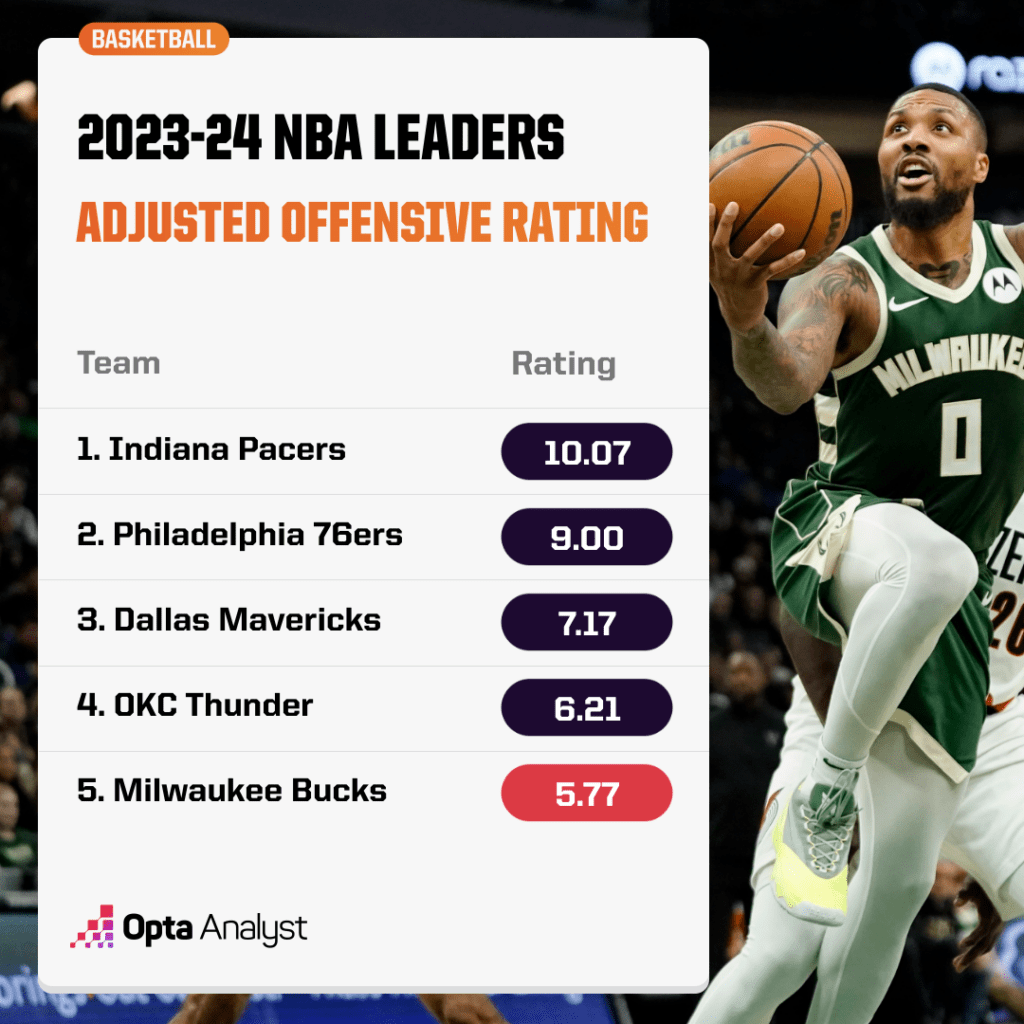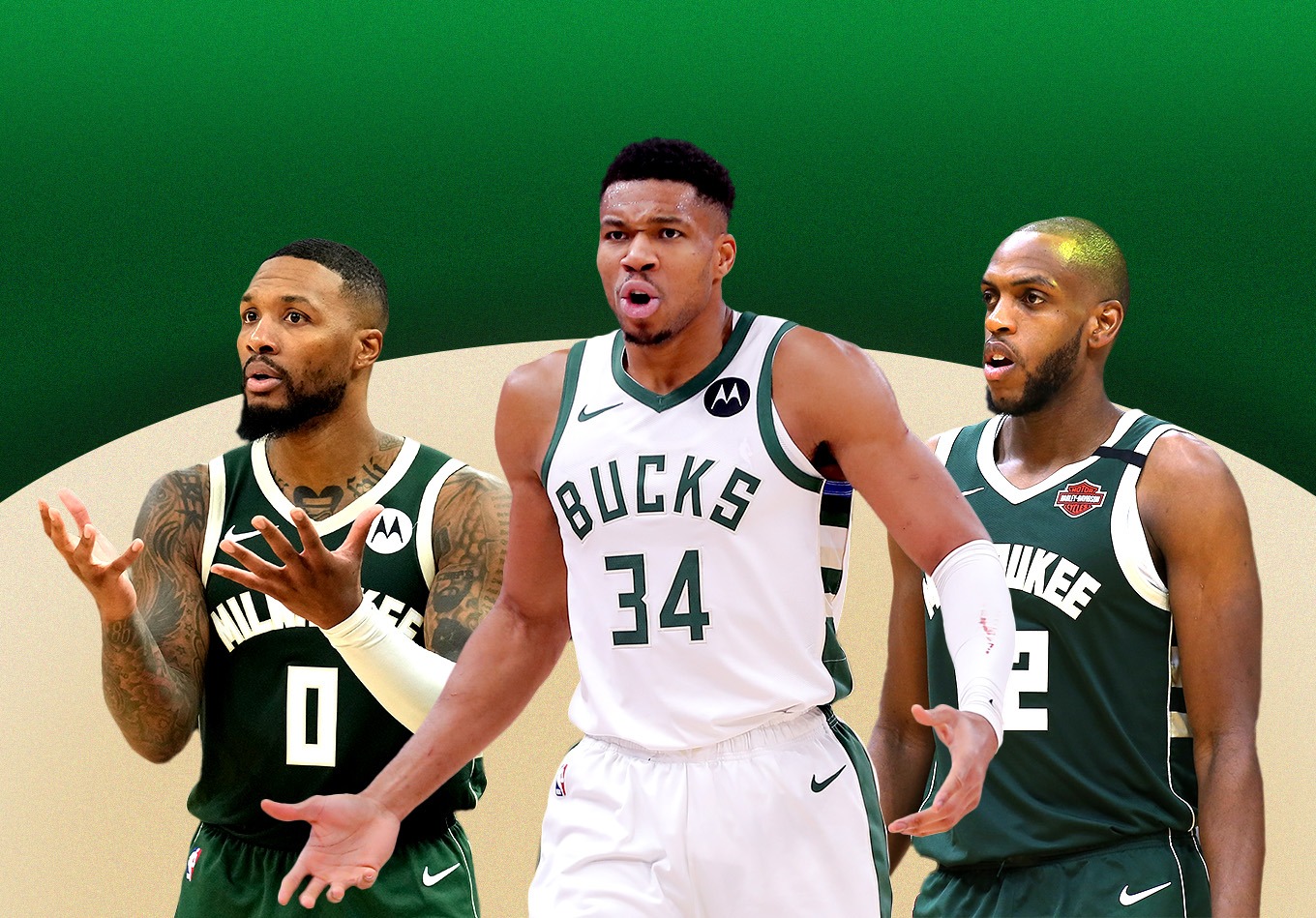At 16-7 and winners in 11 of their last 14 games, the Milwaukee Bucks may not seem like a team that needs saving.
However, despite being tied for the third-best record in the association, the Bucks only boast the seventh-best net rating (and 13th-best title odds) – a hallmark feature of a team that isn’t as good as its win-loss count suggests.
A big reason for this disparity is the team’s clutch performance to start the year. So far, the Bucks have a league-high 10 clutch wins (NBA.com) and the third-best clutch net rating at plus-27.6 (Stats Perform). Undoubtedly, much of their success has been fueled by blockbuster offseason acquisition Damian Lillard.
(Sidebar: NBA.com defines a clutch game as five or fewer minutes remaining in the game and the scoring margin is within five points, while Stats Perform defines it as within six points.)
Lillard’s affinity for the clutch (aka Dame Time) is a legitimate bow in the Bucks’ quiver. Historically, Lillard-led teams perform well in late-game situations. But truly great teams, the ones that compete/win NBA titles, don’t rely solely on narrow victories to fuel their run.
Simply put, title teams blow opponents out. And considering how much Milwaukee sacrificed to get Lillard, a title has to be its end goal this season.
So, what is stopping the Bucks from looking like a true contender?
Adding Lillard has bolstered Milwaukee’s once mediocre offense. After finishing 13th in our adjusted offensive rating (AOR) metric last year, the Bucks sit at fifth in that category now (although their new offense has had some moments of stagnation).

The issue is that their once great defense (seventh in adjusted defensive rating, aka ADR) has fallen off a cliff – currently sitting at 20th in the metric.
Upon hearing that, one may assume that Brook Lopez and Giannis Antetokounmpo have taken a significant step in the wrong direction. But the twin tower duo is looking as fearsome as ever – both are currently sitting in the top 25 in defensive DRIP or D-DRIP (minimum 100 minutes played). And Lopez is tied for second in the entire association in block percentage (7.5%)
Their rim protection is still stout. That is, when their rim protectors are in position to do the rim protecting.
You see, strong rim protection is a key ingredient to many great defenses. But that rim protection is nullified if a team’s perimeter defenders are constantly conceding advantages to the opposition (see the 2021 Western Conference semifinals between the Utah Jazz and Los Angeles Clippers).
Some might argue that having good point-of-attack defense is even more important than having good rim protection. In a recent study, it was shown that 46.2% of top-10 defenses since 2003-04 have been good (by their choice of measurement) rim protecting teams. On the flip side, 64.8% of those teams were good at defending at the point of attack.
With Lillard (minus-1.6 DRIP) and Malik Beasley (-1.1) as the starting backcourt, the Bucks are ill-equipped to be a strong perimeter defense.
In the first clip from the montage above, you see Beasley completely die while trying to navigate the screen set by Isaiah Hartenstein. This forces Lopez to contain Beasley’s assignment (Immanuel Quickley) and makes him late to rotate over to stop Hartenstein’s roll. No matter how great of a rim protector Lopez is, there is nothing he can do in situations like that.
While the clip reel only features meltdowns from Beasley and Lillard, their teammates Cameron Payne (-1.7), Pat Connaughton (-1.0) and Jae Crowder (-0.1) have all been a part of the problem.
For the Bucks to go from a really good team to one that is in serious contention for a title, they need to find a way to strengthen their perimeter defense without taking too much off the table on offense.
A big obstacle in this crusade is that outsourcing to remedy this problem is nearly impossible. The trade that netted Lillard (a deal they needed to make, for the record) has left them with hardly any tradable assets. That means that if this change is going to take form, it needs to come from in-house.
That’s where MarJon Beauchamp comes in (not cool to wait this long to introduce the main character, I know).
Rookie Andre Jackson Jr. is a good perimeter defender. But at this point in time, he’s a very limited offensive player. Meanwhile, second-year wing AJ Green is a good shooter and spacer. So, he won’t hurt the offense. But he owns the team’s worst D-DRIP (-2.1).
Beauchamp is far from perfect (more on this in a second), but he likely represents the team’s best bet at filling the hole we’ve outlined.
On defense, Beauchamp isn’t yet at the level of a Herbert Jones. He’s not completely dictating the terms of engagement with his strength and anticipation. However, with a near 7-foot-1 wingspan and the ability and willingness to execute consecutive swift lateral movements, Beauchamp has a strong claim as the team’s best point-of-attack defender.
Look at these clips and compare them to the Beasley/Lillard possessions we showed you earlier:
Overall, the Bucks’ defense is better with Beauchamp on the floor, posting a 114.2 defensive rating in his minutes (1.6 points better than their overall defensive rating).
Offensively, Beauchamp isn’t like many young defense-first wings/forwards. He isn’t an accident waiting to happen when he puts the ball on the floor. In fact, some would say he’s even got some juice as an off-the-dribble scorer.
Flashes like this one against the Detroit Pistons are promising.
According to NBA.com, 22.8% of Beauchamp’s shots come after he’s taken three or more dribbles. This frequency is right around the rate of known bucket-getter Devin Vassell (22.4%). Now, this doesn’t mean Beauchamp will be taking Penny Hardaway step-back jumpers anytime soon, but it does further illustrate our point (that he has some ball skills).
(Sidebar No. 2: While Beauchamp has shown the ability to put the ball on the floor, a micro-skill he needs to continue to improve on this season is his ability to drive closeouts with more decisiveness. On the year, Beauchamp is in the 21st percentile in true shooting on drives.)
Beauchamp also has utility as a cutter and offensive rebounder. He’s in the 65th percentile in offensive rebounding percentage overall (that includes big men) despite spending 79% of his minutes this season at small forward (per Basketball Reference).
The biggest question mark surrounding Beauchamp is his ability to shoot and space the floor. After all, what good does it do Milwaukee to have improved perimeter defense if it comes at the cost of its offense?
Recent numbers suggest that Beauchamp will be able to wear the spacer hat for the Bucks. On the season, he’s canning 43.2% of his triples.
But that sample size is microscopic (37 3-point attempts). If you look at his two summer leagues, two preseasons, two regular seasons, and lone playoff series, you get a much larger dataset. Based on those filters, Beauchamp is shooting a much less impressive 35.4% on 257 3-point attempts.
Which percentage is more emblematic of Beauchamp’s current ability? His film doesn’t reveal any strange hitch or mutation in his shooting form. Maybe he can hit enough shots to avoid hindering the Bucks’ high-powered offense in the playoffs. But then again, we’ve seen countless other players of Beauchamp’s ilk struggle to adequately space the floor in a postseason setting in the past.
Whatever it ends up being, Beauchamp’s role (and production) will be worth monitoring for the rest of the season, as this wiry, 5.2-point-per-game scorer may just be the Bucks’ only hope of gifting Lillard with his first NBA championship.
Check out our MLB offseason news and NBA in-season coverage, and our NFL picks and college football predictions. Follow us on X and Instagram for more!
